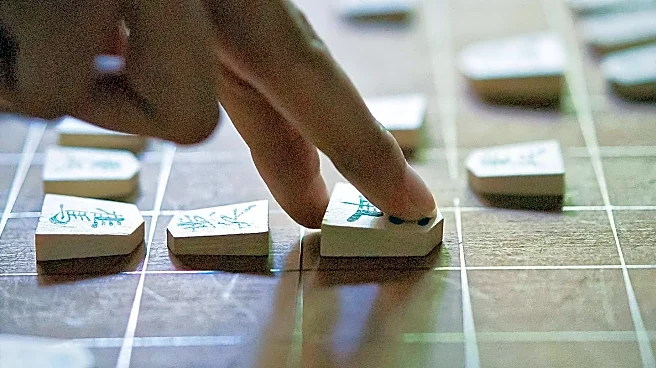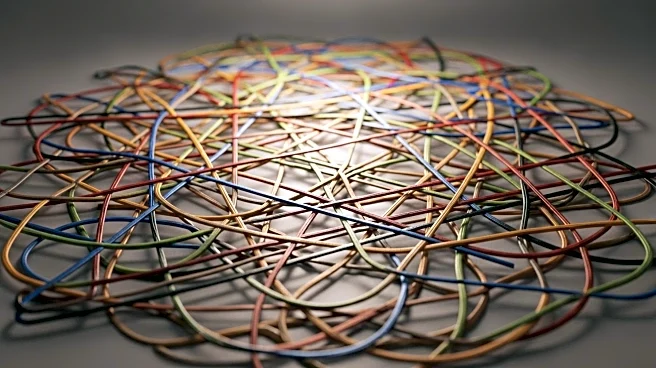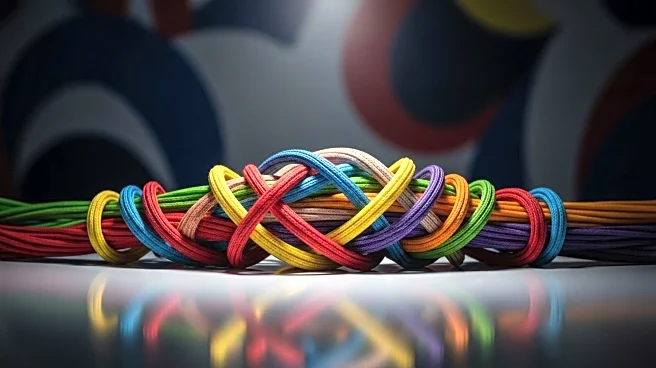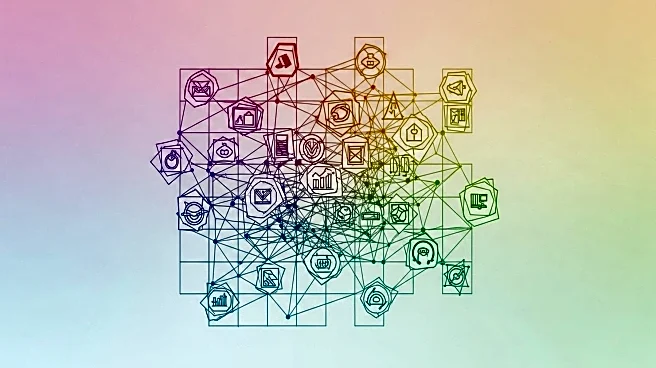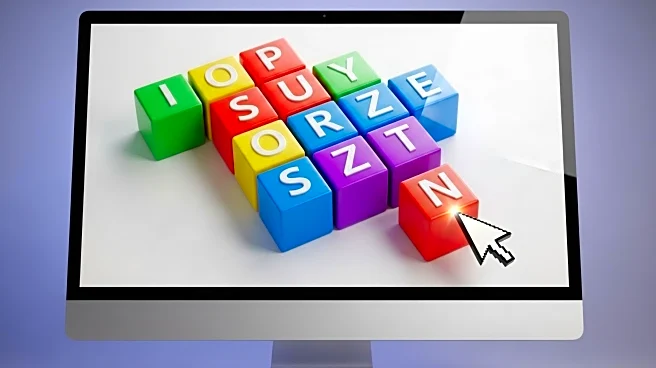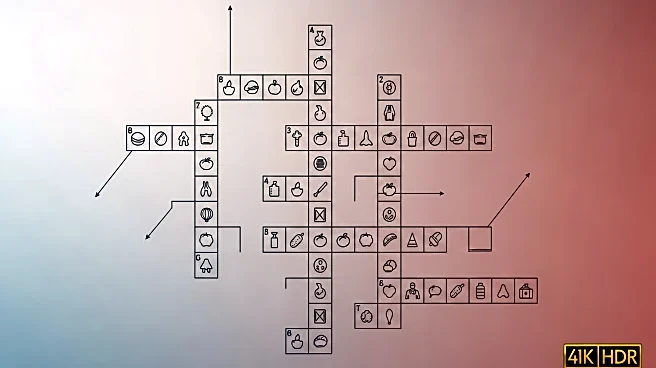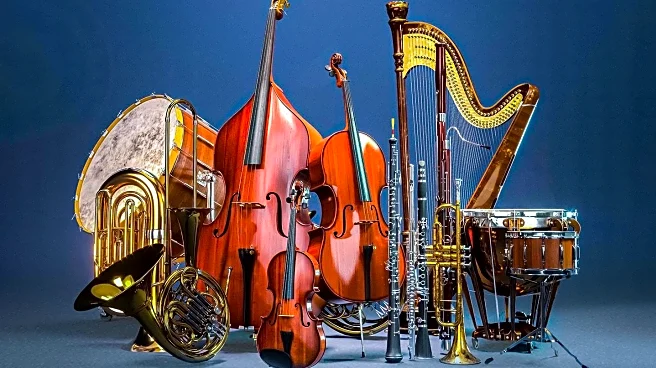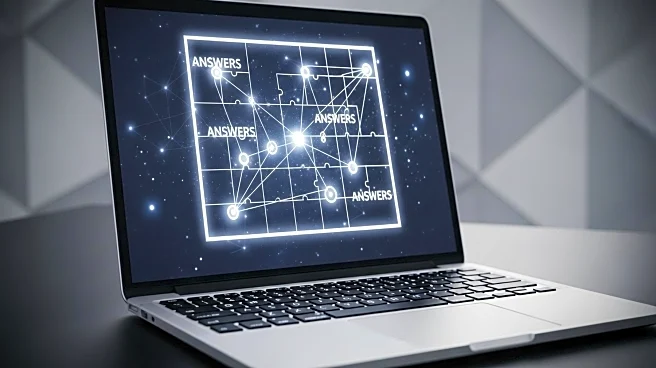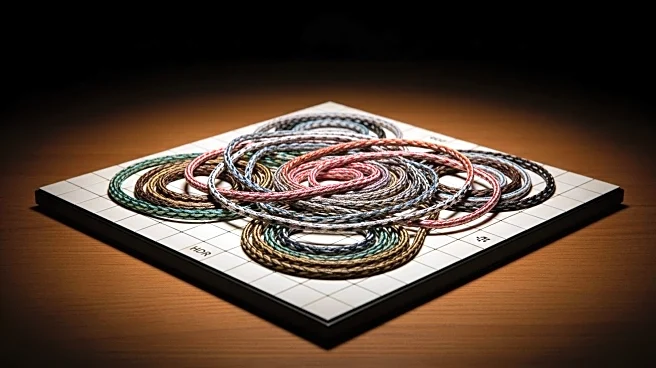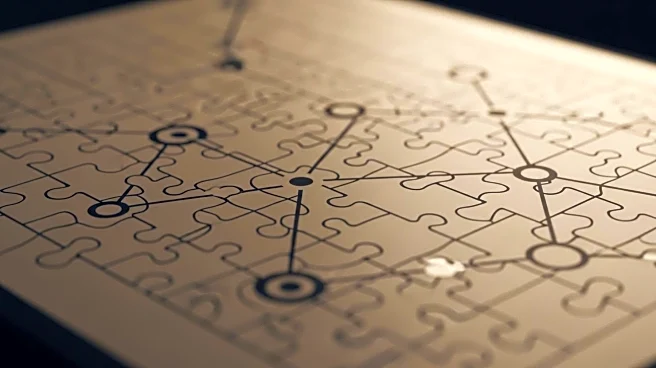What's Happening?
The New York Times crossword puzzle for October 9, 2025, created by Freddie Cheng, presents a unique theme centered around the phrase 'All Thumbs.' The puzzle includes clues that describe various gestures one can make with their thumbs, providing a playful and engaging challenge for solvers. Initially rejected, the puzzle was revived with the help of puzzle editor Ian Livengood, who suggested the theme's revealer. The puzzle encourages solvers to scan the clue list before starting, a strategy that helps identify 'gimmes' and understand the theme. Despite the difficulty in connecting the revealer to the theme, the puzzle offers an 'Aha!' moment for those who solve it.
Why It's Important?
Crossword puzzles like this one serve as a mental exercise, promoting cognitive skills such as problem-solving, vocabulary expansion, and pattern recognition. The inclusion of a theme adds an extra layer of complexity, challenging solvers to think creatively and make connections between seemingly unrelated clues. The puzzle's revival and publication highlight the collaborative efforts in the puzzle-making community, showcasing the importance of feedback and innovation in creating engaging content. For enthusiasts, solving such puzzles can be a rewarding experience, offering a sense of accomplishment and mental stimulation.
What's Next?
As crossword puzzles continue to evolve, solvers can expect more innovative themes and challenging clues that push the boundaries of traditional puzzle-solving. Puzzle creators may explore new formats and incorporate diverse cultural references to appeal to a broader audience. The success of themed puzzles like 'All Thumbs' could inspire other creators to experiment with unique concepts, fostering creativity and collaboration within the puzzle community. Additionally, solvers might adopt new strategies to tackle increasingly complex puzzles, enhancing their skills and enjoyment.
Beyond the Headlines
The cultural significance of crossword puzzles extends beyond mere entertainment. They reflect linguistic trends, societal norms, and historical events, offering insights into the zeitgeist of the times. The collaborative nature of puzzle creation underscores the value of community and shared knowledge, as editors and creators work together to refine and perfect their craft. As puzzles become more intricate, they may also serve as educational tools, encouraging learning and exploration of new topics.

